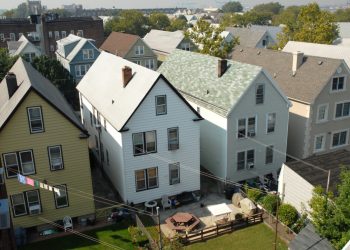Annual gains in home prices have continued their weakened slope for another month, a trend that began back in the spring of this year, according to the latest data.
The September S&P Cotality Case-Shiller Home Price Index saw home prices post a 1.3% annual gain, the “weakest performance since mid-2023,” which “represents a stark contrast to the double-digit gains that characterized the early post-pandemic era,” according to Nicholas Godec, head of Fixed Income Tradables & Commodities at S&P Dow Jones Indices.
Both City Composites, which track prices in a selection of major metros, also declined in September. The 10-City Composite showed an annual increase of 2%, down from a 2.1% increase the previous month. The 20-City Composite posted a year-over-year increase of 1.4%, down from a 1.6% increase the previous month.
Inflation also continued to outpace home prices in September for the fourth straight month, as September’s CPI ran 1.7 percentage points above housing appreciation. Godec specified that this is the “widest gap between inflation and home-price growth since the two measures diverged in June, with the spread continuing to widen each month.”
Annually, Chicago saw the highest gain among the 20 cities with a 5.5% increase in September, followed by New York and Boston with annual increases of 5.2% and 4.1%, respectively. Tampa posted the lowest return in September, falling 4.1%.
Month-over-month, 20 tracked metros saw actual depreciation in home values in September, all seeing declines before seasonal adjustment. After seasonal adjustment, the U.S. National and 10-City Composite Indices reported a monthly increase of only 0.2%, and the 20-City Composite Indices posted a month-over-month gain of only 0.1%.
“This broad-based monthly weakness suggests that elevated mortgage rates—which remained near 6.3% in late September—are finally overwhelming the market’s supply constraints,” said Godec.
Realtor.com® Senior Economist Anthony Smith agreed with this sentiment, adding that “while mortgage rates have eased modestly from earlier in the year, helping lift existing-home sales in October for the fourth consecutive month, overall affordability remains stretched.”
“Elevated prices and borrowing costs are keeping transaction volumes historically low and contributing to increasingly uneven market conditions across regions,” he continued.
Godec added that “over the past six months, national home prices have risen just 0.4%, a gain that is only marginal in nominal terms and negative in real inflation-adjusted terms.”
Leading the monthly downturn was Tampa (-0.95%), followed by San Diego (-0.92%), Seattle (-0.91%) and Las Vegas (-0.85%). The smallest declines were in Cleveland (-0.01%), San Francisco (-0.05%), Phoenix (-0.09%) and Miami (-0.1%).
Looking at the full September report, Smith said the results “illustrate a market that is losing steam under the weight of high mortgage rates and multi-decade-low affordability.”
“Some metros continue to show modest strength, with national appreciation continuing to ease. Several Sun Belt markets are now seeing outright declines,” he continued. “With borrowing costs still elevated and inventory rebuilding uneven across the country, the housing market is settling into a period of slower, more fragmented price growth heading into year-end.”












